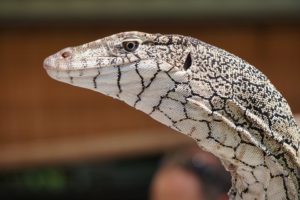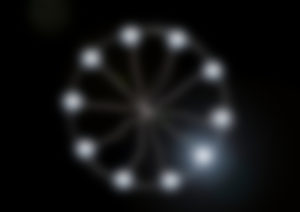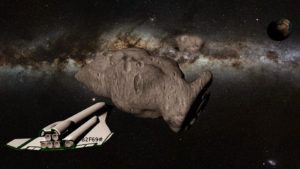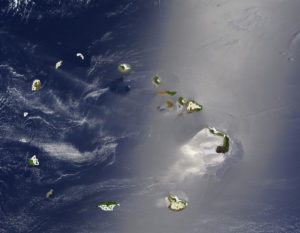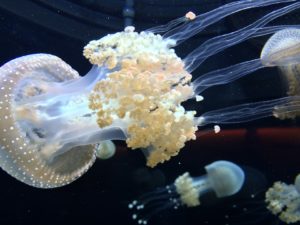Welcome to Flying On The Fringe. I’m going to try a little experiment. Since I am a science fiction writer, I thought I would try posting a short story that won second place in the Space Journey contest at Ozark Creative Writers Conference last year. (If you’re interested, the 2017 conference runs October 8-10 in Eureka Springs, Arkansas, and you can register at the door. Visit their site at www.ozarkcreativewriters.com).
The story is too long for a single post, so I am breaking it into two installments. The second installment will be posted October 10. Please leave a comment so I will know if you enjoyed reading it or it drove you absolutely bananas.
If enough people enjoy this, I have other stories I may post this way. If not, oh well, its back to the drawing, I mean writing, board.
Hope you enjoy reading First Contact.
First Contact
(Installment 1)
It had been a normal cargo run from Earth to the moon colony until sixty seconds ago.
Every warning siren on the ship screeched and every light that could be red was. Strings of vibrating colors surged past the ship. Then, as suddenly as the nightmare had begun, it was over. The sirens shut off, systems turned back to green. Everything on the ship was normal.
The stars were not.
Jack Daniels stared in disbelief. He couldn’t identify a single pattern.
Dead ahead lay a massive structure the size of a small moon. It had a solid cylindrical core surrounded by at least a couple dozen concentric rings that rotated around the core. He estimated the rings were about two kilometers apart. Humans had never built anything like this.
“All systems normal,” reported his co-pilot Peri. Never ruffled, perfect female form, brown hair, brown eyes. He could go for a dame like that. If only she wasn’t an android.
They were blasting toward the alien thing at more than 36,000 kilometers per hour, twice their normal cruising speed. The ship must have picked up a sling-shot effect when it exited the anomaly. Jack was certain it was a wormhole, though no human had ever seen one. Alien stars, alien space station.
“All engines, full reverse!”
“Firing retros.”
Their speed slowed to three hundred kph. Steady, not accelerating, a controlled approach. “Peri, why are we still moving forward?”
“The alien station is pulling us in, but I have been unable to identify the type of force.”
“How long would the rockets need to burn in reverse, full thrust, to move the ship to a safe distance from that thing?”
“This ship does not have sufficient power to overcome the current attractive force. The object is the diameter of the Mars moon Phobos, but has significantly less mass, indicating the core and the rings are hollow. No other ships evident.”
In less than thirty minutes their ship closed the distance to the nearest ring. Peri slowed their ship to five kph, docking speed. A giant port rotated open before them like a camera lens.
Jack grabbed his spacewalk suit, custom-built for his six-foot-four, two-hundred pound frame. It was always cool in space, but his black hair was now sweat-plastered against his forehead.
A gentle bump and a hiss signaled successful docking with the ring. “Open dock port,” Jack ordered. The ship’s door pulled inward and rolled to the right, revealing a corridor about twenty feet wide. The walls and ceiling were a matte gray metal and followed the curvature of the ring, but the floor was flat.
Jack pulled up readouts on his helmet. “No artificial gravity, no atmosphere. Wait, its changing. Must have sensed our ship’s atmosphere. It’s coming up to standard Earth composition. I think I can ditch the suit, but I’ll still need my magnetic boots.”
“And helmet,” Peri answered. “Just in case it should change again.”
“Right.” Jack shed the suit, leaving it heaped close to the airlock. He strapped on a laser pistol, slung a high-powered forty caliber rifle over his shoulder, and stepped into the opening.
“Peri, stay on board. I want the ship ready to launch on command.”
“Bad idea. You should take backup.”
“You’re right. But if this goes horribly wrong, I need you to get back through that wormhole and warn earth. That’s an order.” She eyed him with a cold stare, but she couldn’t disobey.
Two feet into the ring, a metal sphere rolled up to Jack. It sprouted four legs and two spidery protrusions which “sniffed” around his leg. Jack froze in place. Seemingly satisfied, it closed up and rolled away.
More of the spheres rolled past in each direction without stopping to pay any attention to the human or his ship. “Guess I passed the first test,” Jack said.
Farther ahead on the interior wall of the ring was a control panel and viewscreen. Symbols on the panel looked more like Braille than lettering. Jack didn’t risk touching it.
He could see about two kilometers around the ring in either direction. Straight ahead was another corridor. It had the same shape, but was narrower, and the walls were pale blue. Symbols glowed in green and gold just inside it. Probably sector identifications for those who could read them. He figured the blue corridor was a spoke that connected the outer ring to the inner core. He followed the spoke to where it ended with a closed circular door. A single round glowing green button protruded from the right side of the spoke’s wall.
“I’ve reached a door with a button. I’m going to go through,” Jack said over his helmet com. Unnecessary, since Peri was watching every step through his helmet’s camera. “Humans have never had confirmed contact with another sentient species. We’re gonna go down in the history books. That is, if we live to tell it.”
Jack pushed the glowing green button. It started blinking, but nothing else happened. Jack frowned.
“The outer rings are rotating around the core,” Peri advised. “That door opens to a chamber similar to an airlock. My scans indicate the chamber is currently moving to your location and the door will open when it syncs up to the spoke. There will be a similar pause for the exit door to come to a stop and open on the station core.”
Jack nodded. As if in agreement, the button turned a steady green and the circular door rolled into the wall. He stepped into a small chamber facing another circular door. Jack pressed an identical glowing green button and it started blinking. This time he could feel a slight deceleration and a barely perceptible bump as the chamber synced with the stationary central core.
Then the door slid open.
